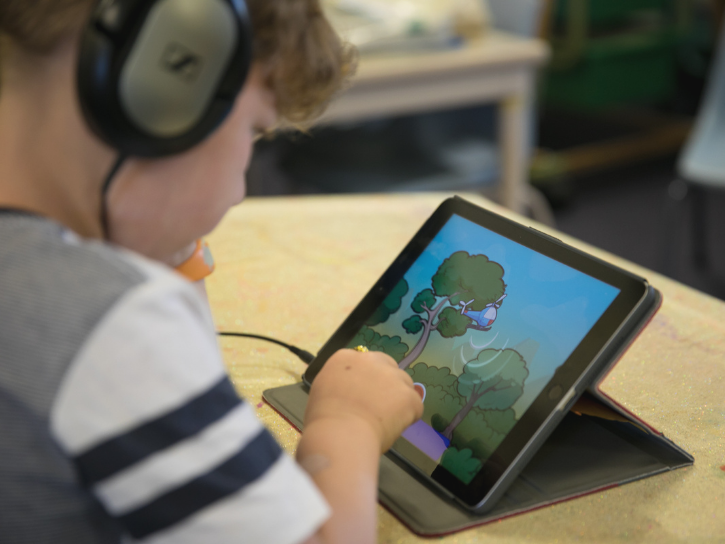Phonics Tests vs Hearing Tests
February 11, 2021
Phonics tests have long been used in schools as a tool to help measure how students are progressing in their reading. In 2021, New South Wales is following in the footsteps of South Australia and the United Kingdom by making these tests compulsory for all year one students.
Given this decision, we thought we’d take a closer look at phonics tests, and how they, combined with a hearing test can measure progression and development in young students. In this post we’ll have a look at what phonics is, what a phonics test includes (and doesn’t include), and why adding in a hearing test will give a more complete picture.
What is Phonics?
If you know your phonemes from your graphemes then you already have a good grasp of what phonics is. For the rest of us, phonics is defined as the relationship between letters and sounds. So that’s learning how to pronounce short vowels and long vowels and talking about the combination of letters to form a particular sound, such as sh, ch, th and ck.
Most (but not all) teachers use phonics in order to teach children how to read by teaching these letter combinations one at a time until the student can recognise these sounds in text, putting them all together to read words and sentences.

What does a Phonics Test Include?
In Australia, phonics tests are based on the UK model and are administered by the classroom teacher. The student is required to read 40 words, 20 real words, and 20 nonsensical words, and it takes around five to seven minutes for a student to complete the test.
Teachers are trained in how to administer the test and assess the results. In South Australia where the test has been compulsory since 2018, 2020 results showed that 63% of students successfully passed the test (which is measured as correctly identifying 28 of the 40 words).[1]

Many of the teachers involved in the NSW pilot study believed that phonics testing helped to identify gaps in reading ability which could be filled by further phonics work for that student.[2] But what if there are other reasons a child is struggling to learn to read phonetically?
What doesn’t a Phonics Test Include?
A phonics test identifies the level at which a child can read phonetically, but it doesn’t offer any explanation as to why a child might achieve a low score (except to suggest more phonics work might help). Could it perhaps be that a child is struggling to learn phonetically because they have trouble hearing or processing the sounds?
The American Medical Association tested the hearing of over 6,000 students finding that 15% of children have low-frequency or high-frequency hearing loss of at least 16dB hearing level in one or both ears. This study concluded that even a slight level of hearing loss, and even in one ear, could “affect educational experience and relationships with other people.”[3]
Another study by UK-based organisation David Morgan Education has found that 5-10% of school-aged children in the UK have an auditory processing disorder (APD). As a result, they find it “harder to work out the sounds contained within words, a key component of learning to read phonetically.”[4]

Assuming that the incidence of children with either an auditory processing disorder or hearing loss would be similar for Australian children as it is for UK or US-based children, we believe there is a case for incorporating compulsory hearing tests alongside phonics tests to build a more complete picture of a child’s health and learning ability.
Adding in a Hearing Test to Build a Complete Picture
One of the most common indicators of hearing loss in young, school-aged children is reading difficulties. This is because children with hearing loss are missing out on key pieces of auditory information ie phonics, that are needed to learn and recognise sounds for reading.
The Sound Scout app has been developed to help identify potential hearing issues, and in this situation, it could help to explain why a student has performed poorly in a phonics test.
The activities in the Sound Scouts app test for a number of hearing issues. The first activity assesses a player’s ability to hear speech in quiet. Here players try to identify words when there is no noise in the background. A poor result in the speech in quiet activity alone may be an indication of conductive hearing loss. Commonly, conductive hearing loss will affect the low frequencies first.
In the second activity, a player’s ability to hear tone-in noise is assessed by identifying a mid-frequency sound (rather than words). If a Player only performs poorly in the tone test they may have a mid-frequency loss. An overall sensorineural hearing loss, including high and low frequencies, will see players perform outside the normal range on all three activities.
As we noted above hearing loss at both high and low frequencies was identified in 15% of children tested in the AMA study.

In the third activity, players try to identify words spoken against a noisy background. This activity, in combination with the first two, may help to identify listening difficulties in noise, often caused by an auditory processing disorder (APD). We also noted above that a UK-based study identified that 5-10% of children tested were found to have an APD.
Given the prevalence of hearing issues in children, and the impact hearing issues have on a child’s ability to develop and learn in the classroom, we believe that a phonics test combined with a hearing test could provide a much more comprehensive analysis of a child’s ability to learn than just one or the other test on its own.
Unfortunately, hearing tests are not yet compulsory in Australian schools (we’re working on it), but thanks to Australian Government funding, the Sounds Scout test is easy to access, is free, and takes less than 10 mins to administer.
[1] South Australia Department for Education, “2020 Phonics Screening Check”, available at https://www.education.sa.gov.au/teaching/curriculum-and-teaching/literacy-and-numeracy/phonics-screening-check-student-understanding-letters-and-sounds. Accessed December 2020.
[2] New South Wales Department for Education “Phonics compulsory for Year 1 students”, https://education.nsw.gov.au/news/latest-news/phonics-compulsory-for-every-student. Accessed December 2020.
[3] Niskar, A., Kieszak, S., Holmes, A., Esteban, E., Rubin, C., Brody, D., “_Prevalence in Hearing Loss Among Children 6 to 19 years of Age_”, available at https://jamanetwork.com/journals/jama/fullarticle/187415?appId=scweb. Accessed December 2020.
[4] David Morgan Education, “How Auditory Processing Issues Cause Reading Difficulty”, https://dm-ed.com/info/auditory-processing-weakness/. Accessed December 2020.
